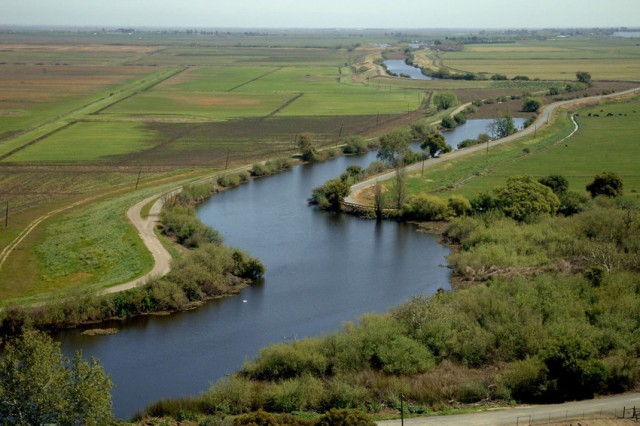
There are two ways to look at any big-ticket item you're going to buy using borrowed money. There's the sticker price — say the $30,000 you agree to pay Volkswagen or Toyota or Ford when you buy a new vehicle. And then there's the price of the money you borrow for the purchase. Let's say you take out a $30,000 loan to buy the car and agree to pay 5 percent interest over five years. You'll get your nice new ride and pay thousands more than the original price as you pay it off.
That same kind of calculation comes into play when considering much bigger purchases — you might think of them as "projects" — like Gov. Jerry Brown's plan to re-plumb the Sacramento-San Joaquin Delta by building twin 35-mile tunnels. The plan, which aims to improve the reliability of water shipments to the South Bay, San Joaquin Valley and Southern California while improving environmental conditions in the estuary, carries a big price tag — depending on whose numbers you're using, somewhere between $15 billion and $18 billion for the giant tunnels themselves and maybe $9 billion more for a hugely ambitious habitat restoration plan.
But that's just the estimated sticker price for the facility, which has been creeping upward ever since the early 1980s, when the cost of Brown's plan for a Peripheral Canal around the Delta was pegged at $1.3 billion. Of course, a dollar was a dollar then. Three years ago, the administration of Gov. Arnold Schwarzenegger estimated the price of a new Delta "conveyance facility" — a canal or a tunnel — at $12 billion.
Those numbers look a lot different when you count the cost of financing. Instead of paying the bank for just a few years to buy a car, the farm and city water agencies that are supposed to bear the cost of building the tunnels and the taxpayers who will pay for habitat restoration and other environmental fixes will be paying off creditors — anyone who buys bonds for the projects — for decades. Natural Resources Defense Council lawyer Barry Nelson pointed out in February 2011 that the Schwarzenegger administration's analysis suggested the 50-year cost of building, operating and financing a Delta tunnel and paying for habitat restoration would be $47 billion.
But it turns out that might be a low-ball estimate.